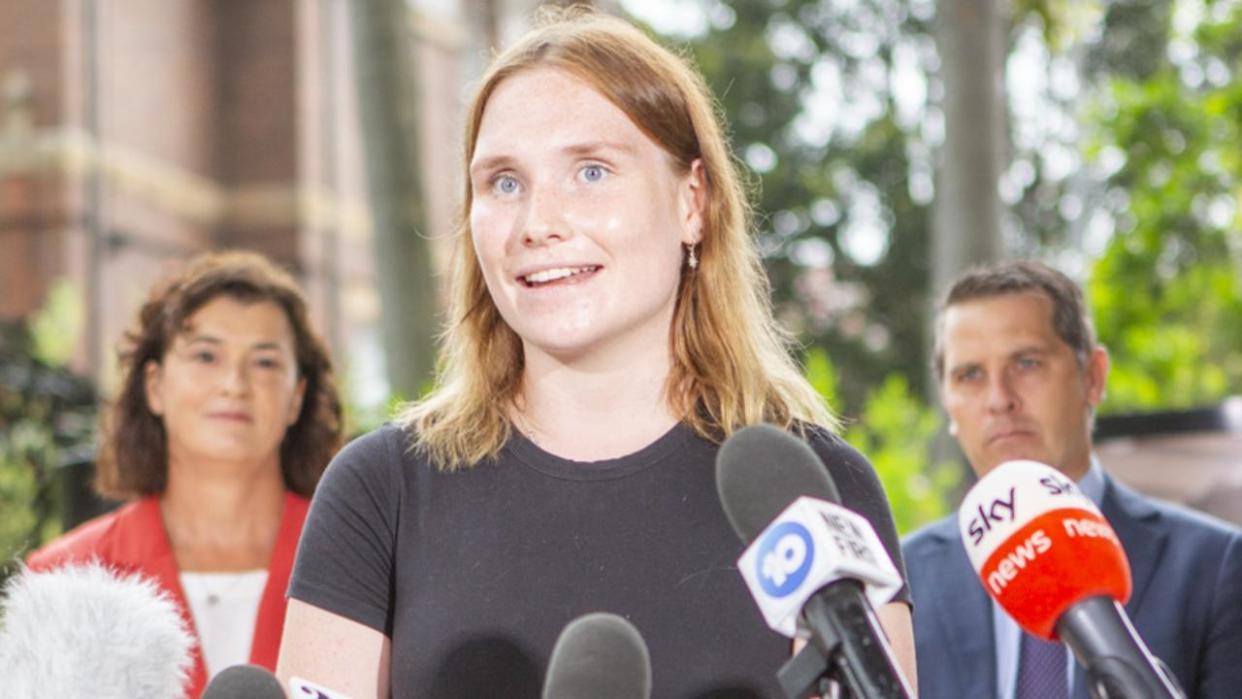‘Really sick’: Inside teen’s vape addiction

When Kate Walker first reached for a vape at the age of 16, she was unaware she was inhaling addictive chemical nicotine.
The NSW resident said she became addicted “really quickly” and was soon vaping “all the time” before the habit landed her in hospital with pneumonia in 2022.
“I didn’t realise the impact it was having on my health,” she said.
“I was really sick, that’s when I knew that I had to quit.
“I didn’t want to admit to myself that I was addicted, but looking back, I would get that anxious feeling when I didn’t have (my vape).”

Now in her early 20s, Ms Walker is one of the faces leading NSW Health’s anti-vaping campaign targeted at teens and young adults aged 14 to 24.
Rates of vaping in people aged 16-24 have increased from 4.5 per cent in 2019-2020 to 16.5 per cent in 2021-22, according to the latest figures from the NSW Population Health Survey.
Xavier Roper, who also appears in the campaign, says his vaping habit left him about 30 minutes from suffocating.
He was rushed to hospital with his oxygen levels hovering somewhere about 40 per cent and spent a week in the intensive care unit, narrowly escaping intubation.
“I realised that I could have died. Maybe 20 minutes, 30 minutes later if I didn’t get to hospital on time, I could have suffocated,” he told NCA NewsWire.

He described the “slippery slope” of addiction, which went from “having a puff or two of your friends’ vape at a party, to buying your own vape, to having it constantly in your hand”.
“Through that six to nine months of vaping pretty heavily, I could gradually feel myself getting worse. It was like a wet blanket over my lungs,” he said.
However, the experience inspired him to quit, with Mr Roper hoping his story will inspire others to do the same.
“A few of my friends have quit since then. I still have a few friends who vape and I like to confiscate their vapes on a night out,” he said.
Launching the campaign on Tuesday, Health Minister Ryan Park said vaping was the “biggest public health challenge” facing young people.
“I come at this as both a legislator and a dad of a 13-year-old, and this is an issue that scares and frightens me,” he said.
“It frightens me because we know that it took three quarters of a century to bring down smoking rates here in this country. We cannot wait that long.”

The NSW government has invested $25m this financial year on tobacco and e-cigarette control, including more than $3m from Cancer Institute NSW for the new campaign.
The government will spend an additional $2.5m over the next 12 months to increase services to help young people quit vaping, including a new digital platform and an online learning module.
Education Minister Prue Car said in order to curb vaping among schoolchildren, the issue needed to be stopped “at the source”.
Ms Car said she had heard reports of students as young as 11 or 12 procuring e-cigarettes through older students, or siblings, and on social media platform Snapchat.
While previously the government had considered using vape detection devices in bathrooms, and on school grounds, going as far to implement a business tender for contracts, Ms Car said it wasn’t a “cure all” tactic.

“What ends up happening is if there’s a vape detector, young people that are addicted to vaping just go somewhere else,” she said.
“So (we feel) that’s not really the best use of resources in terms of stopping young kids in our primary and high schools.”
Ms Car said primary school curriculums would be updated to include lessons on the dangers of vaping. This would be taught from year 4 and continue into high school.
“We did it for years and years when it came to things like smoking, and we will put in extra effort into curriculum updates when it comes to vaping,” she said.


